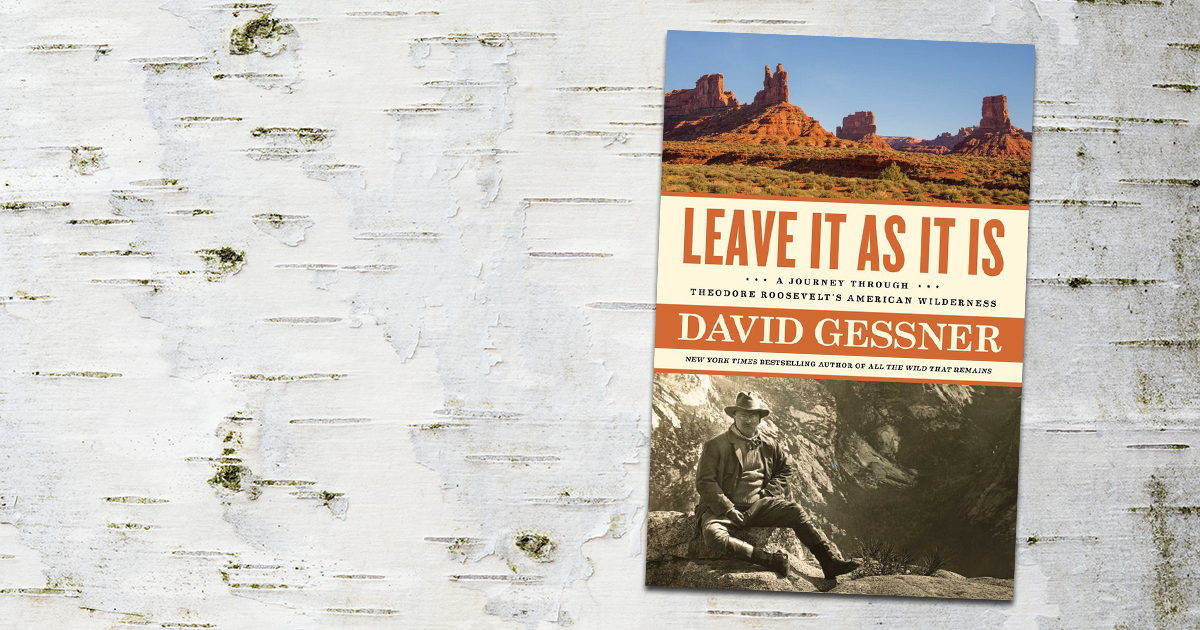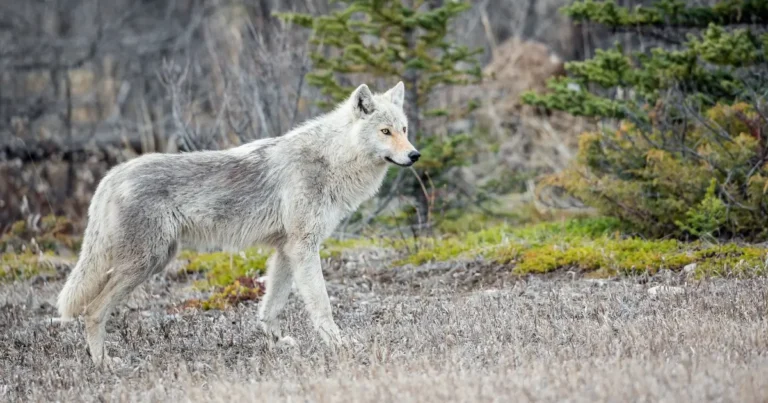
By Ana Giovanetti
Volunteer Writer
Leave it as it is!
Imagine the 26th President of the United States standing in front of the 45th President saying these words, sharply and confidently, as he demands for the protection of America’s most precious gifts.
A century past, President Theodore Roosevelt stood on the rim of the Grand Canyon and delivered one of his famous speeches: “Leave it as it is. You cannot improve it. The ages have been at work on it and man can only mar it.” He demanded that the Grand Canyon be protected as a National Monument for everyone to enjoy.
Author David Gessner brings Theodore Roosevelt to modern day in pursuit of clarity and inspiration during Trump’s America. In Leave it as it is: A journey through Theodore Roosevelt’s American Wilderness, published August 2020 by Simon & Schuster, he takes us on a wilderness tour to the very landscapes that inspired America’s greatest conservationist; the very landscapes on which Roosevelt established over 230 million acres of protected lands.
Gessner began writing this book through outrage when the current president ordered an 85 percent (about 1.3 million acres) reduction of the Bears Ears National Monument; a monument that was designated by President Barack Obama; a landmark unique for its historical and spiritual significance to Indigenous people. Bears Ear was protected under the Antiquities Act – the very act Roosevelt helped create.
Each chapter takes us on a different stage in Roosevelt’s life as the author road-trips through America’s West. From Yellowstone National Park to the Grand Canyon, the book is a gorgeous account of the current landscapes and natural history through both the author’s eyes and through written passages from Roosevelt’s travels.
Roosevelt came to the West as a sportsman-hunter seeking the blood of bison and other game animals. Upon witnessing the complete annihilation of bison and elk population, along with the effects of cattle grazing on the land, he began singing a different tune. He knew that if he didn’t act fast, America’s landscapes, wildlife and plant life would be lost forever.
The juxtaposition between Roosevelt’s time and current day environmentalism makes this book extremely important in today’s conversation about the current environmental and political climate. By recounting the life and opinions of past American leaders, Gessner reflects on the importance of interpreting the past with our modern eyes.
Some of Roosevelt’s thinking was progressive beyond his years. The former president looked into the future to an Anthropocene that he could not have known, but somehow predicted. He knew that if we continued to allow cattle to degrade what was left of America, future Americans would suffer. Without protection, the world would lose a piece of itself.
[Gessner] explains how much of America’s past is deeply rooted in oppression and marginalization of Indigenous people and traditions. Environmentalism was hardly different.
At the same time, Gessner maintains a critical eye of the former president’s past ideologies. He explains how much of America’s past is deeply rooted in oppression and marginalization of Indigenous people and traditions. Environmentalism was hardly different.
For example, National Monuments were once a point of contention, particularly within Indigenous communities. Gessner explains how it was a tool to both preserve the land and limit Indigenous use in order to further alienate Indigenous people.
Now, in the fight for Bears Ear National Monument, the very tool that was once used against them, is sought after by Indigenous people. Through interviews with Indigenous peoples leading the retaliation, he describes a sense of empowerment, responsibility and obligation as they join with environmental groups in the fight against mining and cattle grazing.
The difference between then and now, Gessner explains, is that there is confluence of the Indigenous ideals of respect and worship of the land along with America’s ideals that guided the creation of national parks and monuments. And this is so important.
By being critical of past ideals and motivations, he writes, “we can blast history open”. We can learn. And we can do better.
Through camping on the same landscape, under the same stars, both Gessner and Roosevelt came to the same conclusion. National Monuments, Gessner explains, are “a place to escape our exhausted and cynical country” and “make us feel less central in our own story”. He writes that “by saving national monuments, we are helping save ourselves.”
Leave it as it is is an honest account of Roosevelt’s vision and legacy through both a critical and open mind. As Gessner puts it, “no matter your or my issues with Roosevelt’s personality and politics, it is hard to deny that what we need is something close to the combination that Roosevelt embodied. Thoughtful, well-read, articulate human beings, of all classes, ages, genders, and races, who care enough about other human beings to throw themselves out with the world and do bottle with the waves of ignorance created by those who live without empathy”.
The takeaway from this book is that conservation is changing. Despite recent evidence and recent politics, conservation is evolving into something more creative, inclusive and exciting. Modern conservation maintains Roosevelt’s ideas of protecting landscape but with a much larger, powerful and more inclusive voice. As disheartening as the reduction of protected lands is, this book brings hope and excitement for the fight for conservation and is a must-read for any conservationist and allies alike.
